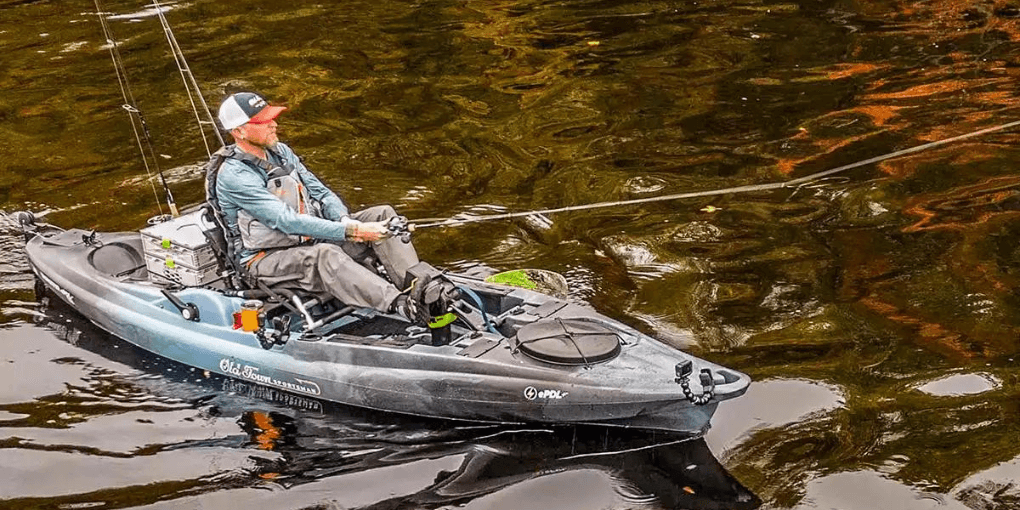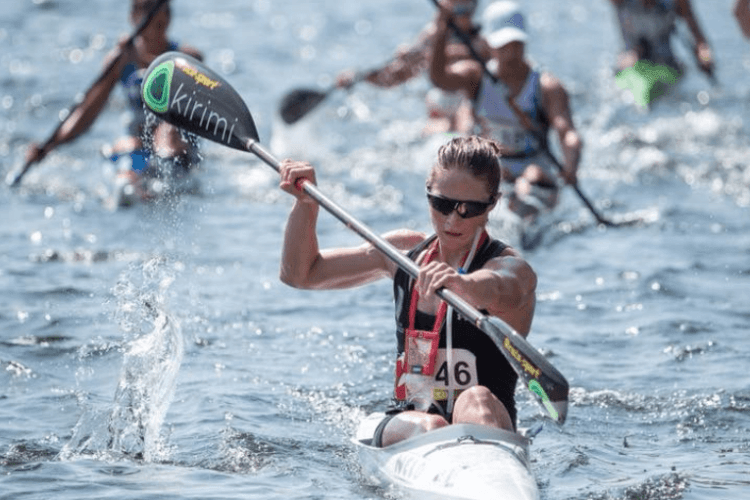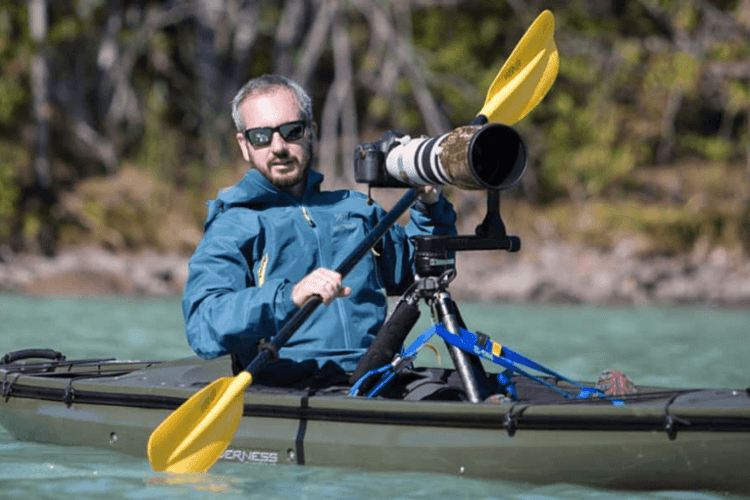The Ultimate Guide to Choosing the Perfect Fishing Kayak
Kayak fishing is a popular outdoor activity that combines the thrill of fishing with the excitement of paddling a kayak.

This form of fishing involves using a kayak to access fishing spots that are difficult to reach by traditional boats or from shore.
It’s a great way to get close to nature and enjoy the peace and quiet of being out on the water.
Kayak fishing has gained popularity in recent years due to its accessibility and affordability. They are compact and lightweight, making them easy to transport and store.
They also provide anglers with the ability to quietly and stealthily approach fish. It raises the likelihood of a catch that is successful.
In addition to being a fun and exciting way to spend time on the water, kayak fishing also provides opportunities for physical activity and exercise.
I am very fond of kayaking. According to my many years of experience, I can tell you that it is a popular choice for people who want to stay active while enjoying the great outdoors.
Importance of Choosing the Right Fishing Kayak
Choosing the right fishing kayak is crucial to having a successful and enjoyable fishing kayak experience.
The right kayak can make a big difference in your ability to catch fish, stay comfortable, and have a safe time on the water.
There are many factors to consider while choosing a fishing kayak.
It includes the type of fishing you plan to do, your budget, and the size and weight capacity of the kayak. The material and construction of the kayak.
A kayak is well-suited to your needs and will allow you to reach your desired fishing spots.
You can carry all of your gear, and provide stability and comfort while fishing.
The right fishing kayak can also help you stay safe on the water by providing enough stability to prevent capsizing. By having features such as a secure hatch or dry storage for your gear.
Choosing the right fishing kayak, you will be able to have a more enjoyable and productive fishing experience.
You’ll be able to focus on catching fish, instead of worrying about the kayak’s performance or comfort.
Investing in the right kayak will provide you with many years of happy fishing trips. It helps create memories that will last a lifetime.
Factors to Consider Choosing a Fishing Kayak

When choosing a fishing kayak, there are several important factors to consider to ensure that you select the right kayak for your needs:
Type of Fishing
The type of fishing you plan to do will determine the type of kayak you need. Different kayaks are designed for different types of fishing.
Such as freshwater or saltwater fishing, still-water or moving water fishing, or fishing for larger or smaller species of fish.
Budget
Kayaks can range in price from a few hundred dollars to several thousand dollars. Hence, setting a budget before making a purchase is crucial.
Size and Weight Capacity
Consider the size and weight capacity of the kayak to make sure it can accommodate you and your gear.
Make sure to consider the weight of the kayak itself, as well as the weight of any gear you plan to bring on your fishing trips.
Stability
Stability is key when it comes to fishing kayaks, especially when fishing in open waters or in choppy conditions.
Kayaks with a wider beam and flatter bottom are generally more stable than narrower and rounder kayaks.
Material and Construction
Kayaks are made from a variety of materials. It includes plastic, fiberglass, or composite materials.
Each material has its own advantages and disadvantages. So consider the durability, weight, and cost of each material before making a purchase.
Features and Accessories
Look for kayaks with features and accessories that will enhance your fishing experience. Such as rod holders, a secure hatch or dry storage for your gear, and adjustable foot pegs or seats for comfort.
Portability
Consider the portability of the kayak if you plan to transport it to different fishing locations. Lighter and more compact kayaks are generally easier to transport and store than heavier and larger kayaks.
By considering these factors, you can find the fishing kayak that is best suited to your needs and will provide you with the best possible fishing experience.
Types of Fishing Kayaks
There are several types of fishing kayaks to choose from, each designed for different types of fishing and water conditions. Some of the most common types of fishing kayaks include:
There are several types of fishing kayaks to choose from, each designed for different types of fishing and water conditions. Some of the most common types of fishing kayaks include:
- Sit-on-top Kayaks: Sit-on-top kayaks are popular for their stability, ease of use, and versatility. They are great for recreational fishing and are well-suited to warmer climates. They offer more ventilation and drainage than sit-in kayaks.
- Sit-in Kayaks: Sit-in kayaks are designed for cooler climates and provide more protection from the elements. They are more maneuverable and have a lower center of gravity than sit-on-top kayaks. It makes them better suited to moving water fishing.
- Inflatable Kayaks: Inflatable kayaks are lightweight, portable, and easy to store. It is a popular choice for anglers who want a kayak that is easy to transport. They are suitable for calm water fishing and are well-suited to beginners or recreational fishing.
- Pedal Kayaks: Pedal kayaks are designed with a foot-operated pedal drive system that provides hands-free propulsion. This makes them popular for fishing, as anglers can keep their hands free to cast and reel in their catch.
- Tandem Kayaks: Tandem kayaks are designed for two or more people to use. It is a popular choice for families or groups of friends who want to fish together.
- Specialty Kayaks: Specialty kayaks are for specific types of fishing. It is adjustable for larger species of fish or kayak fishing in the surf.
How to Try Out a Fishing Kayak
Trying out a fishing kayak before making a purchase is a great way to get a feel for the kayak’s handling and stability, and to ensure that it is comfortable and well-suited to your needs. Here are some tips on how to try out a fishing kayak:
- Research the types of fishing kayaks available and make a list of the features and accessories you are looking for in a kayak.
- Visit a kayak dealer and talk to a salesperson about your needs and the types of kayaks you are interested in.
- Take a test paddle in the kayak you are interested in to get a feel for its handling, stability, and comfort. If possible, test the kayak in conditions similar to those in which you plan to fish.
- Consider the space in which you will be storing and transporting the kayak. Make sure the kayak will fit in your vehicle and that you have adequate storage space for it when not in use.
- Ask the salesperson any questions you may have about the kayak, its features, and maintenance requirements.
By following these steps, you can find the perfect fishing kayak for your needs and be confident in your purchase.
Maintenance and Care of Fishing Kayaks
Maintaining and caring for your fishing kayak is essential to keep it in good condition and to ensure it lasts for many years. Here are some tips for maintaining and caring for your fishing kayak:
- Cleaning: Clean your fishing kayak after each use to remove dirt, debris, and salt deposits. Use mild soap and water, and be sure to rinse thoroughly.
- Drying: Dry your fishing kayak completely before storing it to prevent mold and mildew from forming. If you have a sit-in kayak, be sure to leave the hatch covers open to allow air to circulate.
- Storing: Store your fishing kayak in a dry, shaded place to protect it from the sun and other elements. If you don’t have a place to store it outside, consider using a kayak storage bag.
- Inspecting: Inspect your fishing kayak regularly for signs of wear, damage, or any other issues. All issues should be resolved right away to avoid future harm.
- Protecting: Protect your fishing kayak from UV rays and other elements by using a UV-resistant kayak cover. This will help to prolong the life of your kayak and keep it looking like new.
Safety Considerations for Fishing Kayaks
Safety should always be a top priority when fishing from a kayak. Here are some important safety considerations to keep in mind:
- Always wear a PFD when kayak fishing, even if you are an experienced swimmer.
- Don’t try to handle more than you can. Consider the conditions, your experience level, and the size and weight of the kayak before heading out on the water.
- Before launching, check the weather forecast and be aware of any changes in conditions. Avoid fishing in high winds, heavy rain, or thunderstorms.
- Take appropriate safety equipment with you, including a waterproof flashlight, a first aid kit, and a whistle.
- Be familiar with the water you are fishing on, including its depth, currents, and hazards. Stay away from areas with heavy boat traffic or other potential hazards.
- Keep a low profile while fishing from your kayak to reduce the risk of tipping over. Avoid sudden movements and maintain proper posture while fishing.
Easy Tips for Maintaining Your Fishing Kayak
Maintaining your fishing kayak is essential to ensure it stays in top-notch condition for all your angling adventures.
With a little TLC, you can extend the life of your kayak and make each fishing trip more enjoyable. Here are some easy-to-follow tips on how to keep your fishing kayak in great shape.
Rinse After Every Use
After a day on the water, give your kayak a thorough rinse with fresh water. This helps remove salt, sand, and other debris that can accumulate and cause damage over time.
Pay special attention to areas like the hull, cockpit, and any crevices where residue might hide.
Store Properly
When not in use, store your fishing kayak in a cool, dry place away from direct sunlight. If possible, store it indoors or use a kayak cover to protect it from the elements.
UV rays can degrade the kayak’s material over time, so keeping it shaded helps preserve its integrity.
Check for Damage
Regularly inspect your kayak for any signs of wear and tear. Look for cracks, scratches, or any damage to the hull.
If you find any issues, address them promptly to prevent further damage. Small repairs can often be done with kayak repair kits available at outdoor stores.
Lubricate Moving Parts
Keep an eye on moving parts such as hinges, rudders, and pedals. Apply a silicone-based lubricant to ensure these components operate smoothly.
This helps prevent corrosion and ensures your kayak remains easy to maneuver.
Protect the Seat
The kayak seat is crucial for comfort during long fishing trips. To maintain it, avoid leaving it in direct sunlight for extended periods, as this can cause fading and deterioration.
Consider using a seat cover or removing the seat when storing the kayak.
Secure Accessories
If you have added accessories like rod holders, fish finders, or anchors, make sure they are securely attached.
Loose or improperly secured accessories can lead to damage or loss. Check them before each outing and tighten any loose screws or fittings.
Keep it Clean
Clean the kayak thoroughly at the end of the season or when needed. Use a mild soap and water solution to remove any stubborn dirt or stains. Avoid harsh chemicals that could damage the kayak’s material.
Future of Perfect Fishing Kayak

Hey, awesome readers! Today, let’s dive into the future and imagine the perfect fishing kayak that’s not just a kayak – it’s like a super cool adventure buddy on the water!
Build Your Own Adventure: What if your kayak was like LEGO blocks on water? You could customize it with different pieces – extra storage here, a cup holder there! Build your dream kayak with all the cool features you want for the ultimate fishing experience.
Zoom-Zoom with Jet Power: Get ready for some turbo-charged fun! Future fishing kayaks might have super cool jet power to help you zip around the water with ease. Paddling? Nah, press a button and zoom to your favorite fishing spots!
Super Steady and No Tipping: Balance is key, right? Imagine a kayak that’s like having a superhero sidekick for balance. No more worries about tipping over – your kayak buddy keeps things steady, even if you want to stand up and show off your fishing skills!
Nature’s BFF – Eco-Friendly Kayaks: Future kayaks might be best friends with nature! They could be made from eco-friendly materials and use the power of the sun to make cool gadgets work. It’s like having a kayak that gives back to the environment!
Easy-Peasy Maintenance Magic: Say goodbye to tricky fixes! Future kayaks could be super easy to take care of. Maybe they’ll have magic self-fixing powers or parts that you can easily swap out. Less time fixing, more time fishing!
Final Thought
To sum up, choosing the right fishing kayak is crucial for a successful and enjoyable fishing trip.
A high-quality kayak can improve your fishing experience and make it easier to catch fish.
Therefore, researching and testing different kayaks before purchasing them is essential.
Investing in the right kayak will allow you to experience the thrill of fishing from your own comfortable and reliable kayak.
FAQs
Consider your body size, the type of water you'll be fishing in, and the storage space you need. Generally, longer kayaks are faster, while wider ones offer more stability.
Sit-on-top kayaks are more open and provide easy access, ideal for warm weather. Sit-inside kayaks offer better protection in colder conditions and have an enclosed cockpit.
Look for features like rod holders, storage compartments, adjustable seats, and stable hull design. Consider additional features like a fish finder mount or a live well if you plan to keep your catch.
Both have their advantages. Pedal systems offer hands-free operation, allowing you to fish while moving. Paddle systems provide a traditional experience and can be better for shallow waters.
Common materials include polyethylene, fiberglass, and inflatable PVC. Polyethylene is durable and affordable, while fiberglass is lightweight. Inflatables are portable and easy to store.


